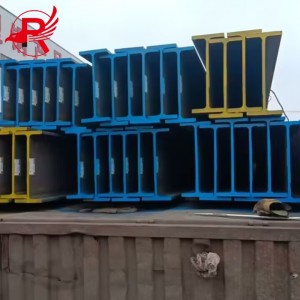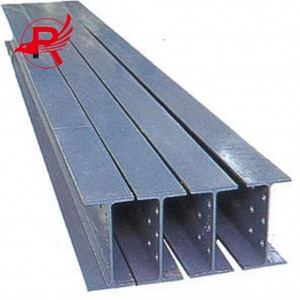H-type Steel Beam Hea/heb/Ipe Type Steel Beam Section Beam European Standard H Beam
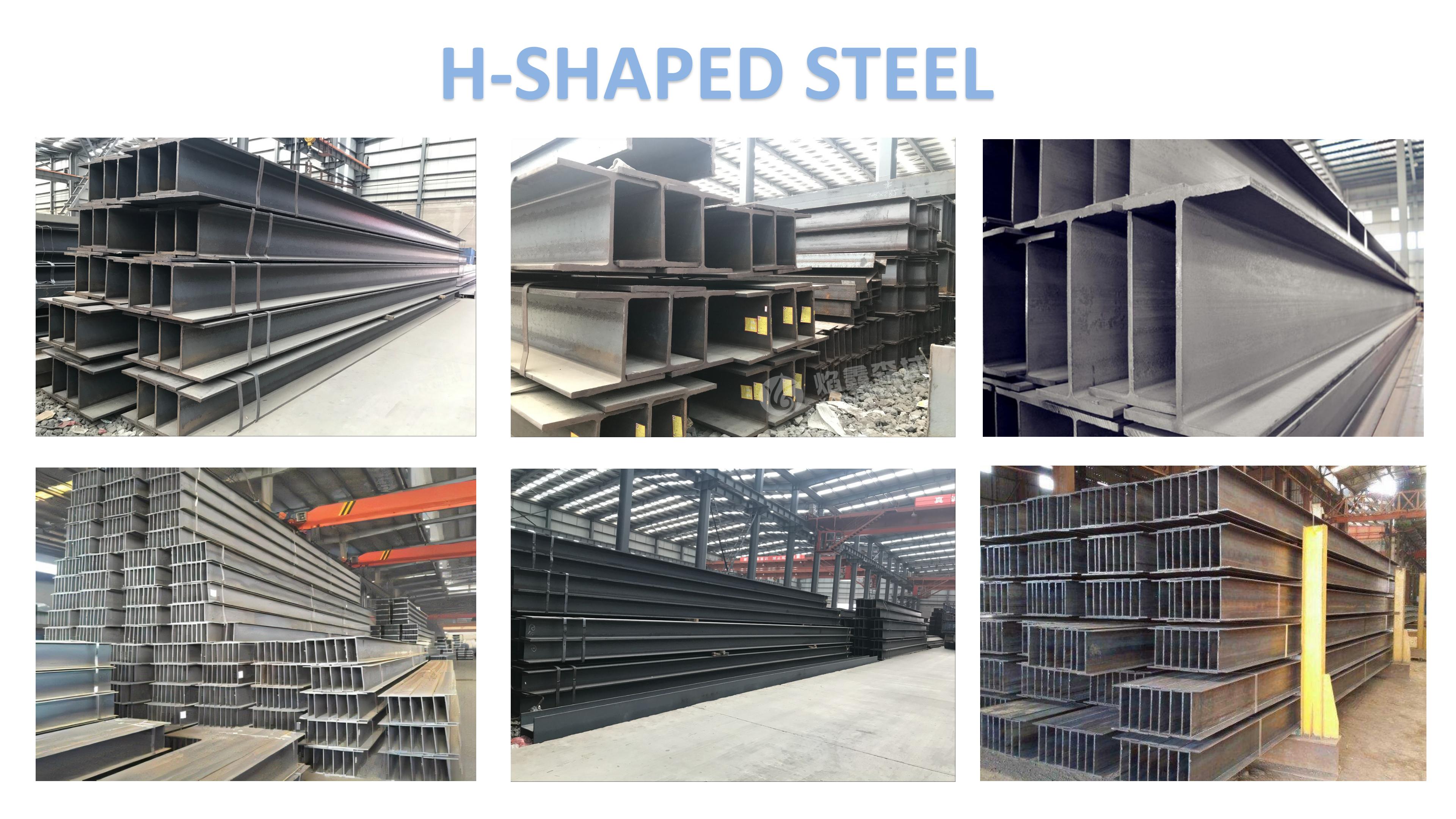
PRODUCT PRODUCTION PROCESS
The production process for standard H-beams typically includes the following main steps:
Raw material preparation: The raw material for producing H-beams is usually steel billets. These billets need to be cleaned and heated to prepare them for subsequent processing and forming.
Hot rolling: The preheated billets are fed into a hot rolling mill for processing. In the hot rolling mill, the billets are rolled through multiple sets of rollers, gradually forming the characteristic H-shaped cross-section.
Cold working (optional): In some cases, to improve the precision and surface quality of the H-beams, the hot rolled H beams undergo cold working processes, such as cold rolling or drawing.
Cutting and finishing: After rolling and any cold working, the H-beams are cut and finished according to customer requirements to meet specific dimensions and length specifications.
Surface treatment: The H-beams are cleaned and treated to prevent rust, ensuring good surface quality and corrosion resistance.
Inspection and packaging: The finished H-beams are inspected for quality, including visual inspection, dimensional accuracy, and mechanical properties. After passing inspection, they are packaged and prepared for shipment to the customer.
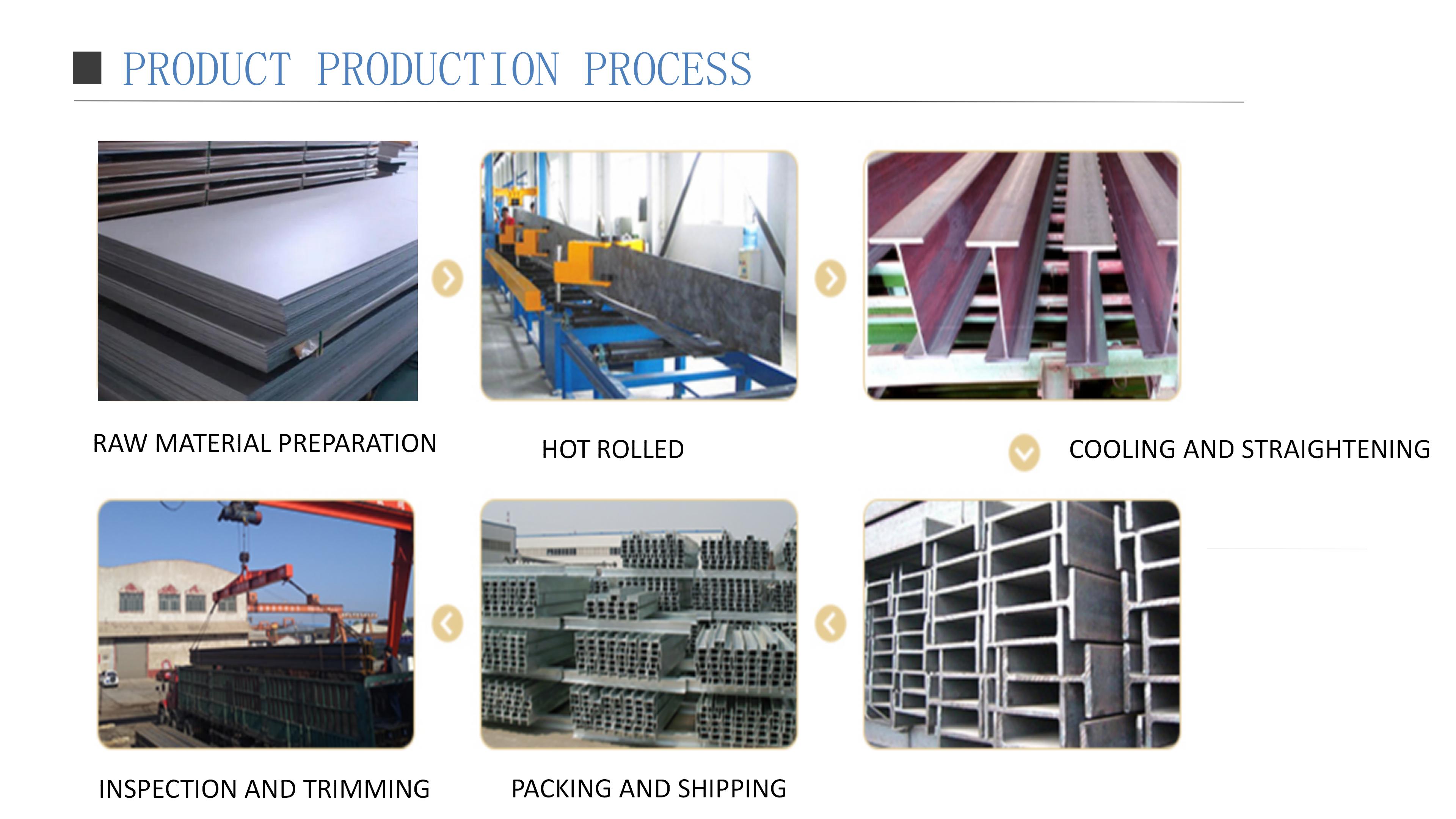
PRODUCT SIZE
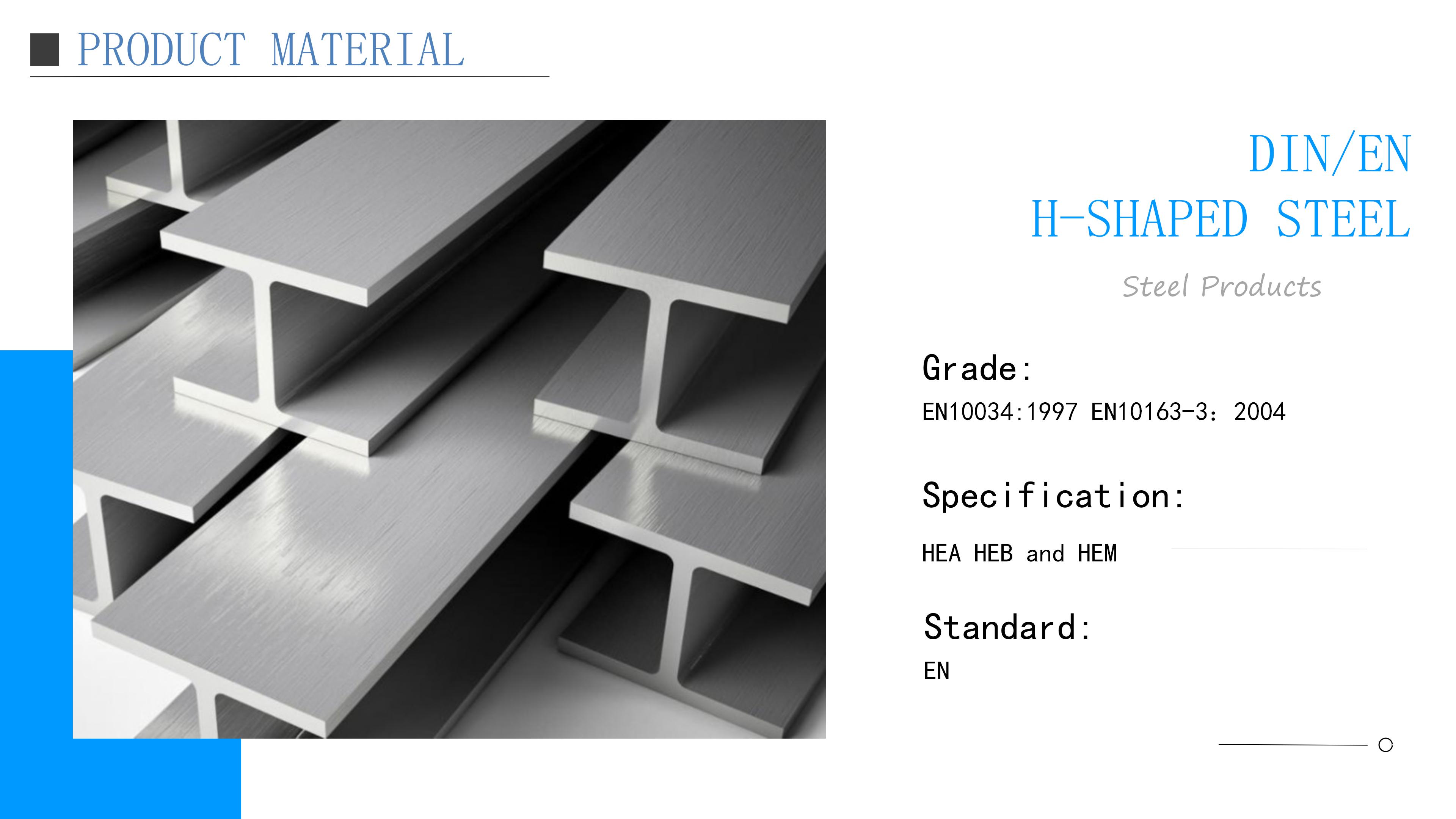
| Designation | Unt Weight kg/m) |
Standard Secional imension mm |
Sectional Ama (cm² |
|||||
| W | H | B | 1 | 2 | r | A | ||
| HE28 | AA | 61.3 | 264.0 | 280.0 | 7.0 | 10.0 | 24.0 | 78.02 |
| A | 76.4 | 270.0 | 280.0 | 80 | 13.0 | 24.0 | 97.26 | |
| B | 103 | 280.0 | 280.0 | 10.5 | 18.0 | 24.0 | 131.4 | |
| M | 189 | 310.0 | 288.0 | 18.5 | 33.0 | 24.0 | 240.2 | |
| HE300 | AA | 69.8 | 283.0 | 300.0 | 7.5 | 10.5 | 27.0 | 88.91 |
| A | 88.3 | 200.0 | 300.0 | 85 | 14.0 | 27.0 | 112.5 | |
| B | 117 | 300.0 | 300.0 | 11.0 | 19.0 | 27.0 | 149.1 | |
| M | 238 | 340.0 | 310.0 | 21.0 | 39.0 | 27.0 | 303.1 | |
| HE320 | AA | 74.3 | 301.0 | 300.0 | 80 | 11.0 | 27.0 | 94.58 |
| A | 97.7 | 310.0 | 300.0 | 9.0 | 15.5 | 27.0 | 124.4 | |
| B | 127 | 320.0 | 300.0 | 11.5 | 20.5 | 27.0 | 161.3 | |
| M | 245 | 359.0 | 309.0 | 21.0 | 40.0 | 27.0 | 312.0 | |
| HE340 | AA | 78.9 | 320.0 | 300.0 | 85 | 11.5 | 27.0 | 100.5 |
| A | 105 | 330.0 | 300.0 | 9.5 | 16.5 | 27.0 | 133.5 | |
| B | 134 | 340.0 | 300.0 | 12.0 | 21.5 | 27.0 | 170.9 | |
| M | 248 | 377.0 | 309.0 | 21.0 | 40.0 | 27.0 | 315.8 | |
| HE360 | AA | 83.7 | 339.0 | 300.0 | 9.0 | t2.0 | 27.0 | 106.6 |
| A | 112 | 350.0 | 300.0 | 10.0 | 17.5 | 27.0 | 142.8 | |
| B | 142 | 360.0 | 300.0 | 12.5 | 22.5 | 27.0 | 180.6 | |
| M | 250 | 395.0 | 308.0 | 21.0 | 40.0 | 27.0 | 318.8 | |
| HE400 | AA | 92.4 | 3780 | 300.0 | 9.5 | 13.0 | 27.0 | 117.7 |
| A | 125 | 390.0 | 300.0 | 11.0 | 19.0 | 27.0 | 159.0 | |
| B | 155 | 400.0 | 300.0 | 13.5 | 24.0 | 27.0 | 197.8 | |
| M | 256 | 4320 | 307.0 | 21.0 | 40.0 | 27.0 | 325.8 | |
| HE450 | AA | 99.8 | 425.0 | 300.0 | 10.0 | 13.5 | 27.0 | 127.1 |
| A | 140 | 440.0 | 300.0 | 11.5 | 21.0 | 27.0 | 178.0 | |
| B | 171 | 450.0 | 300.0 | 14.0 | 26.0 | 27.0 | 218.0 | |
| M | 263 | 4780 | 307.0 | 21.0 | 40.0 | 27.0 | 335.4 | |
| Designatio | Unit Weight kg/m) |
Standad Sectional Dimersion (mm) |
Sectiona Area (cm²) |
|||||
| W | H | B | 1 | 2 | r | A | ||
| HE50 | AA | 107 | 472.0 | 300.0 | 10.5 | 14.0 | 27.0 | 136.9 |
| A | 155 | 490.0 | 300.0 | t2.0 | 23.0 | 27.0 | 197.5 | |
| B | 187 | 500.0 | 300.0 | 14.5 | 28.0 | 27.0 | 238.6 | |
| M | 270 | 524.0 | 306.0 | 21.0 | 40.0 | 27.0 | 344.3 | |
| HE550 | AA | t20 | 522.0 | 300.0 | 11.5 | 15.0 | 27.0 | 152.8 |
| A | 166 | 540.0 | 300.0 | t2.5 | 24.0 | 27.0 | 211.8 | |
| B | 199 | 550.0 | 300.0 | 15.0 | 29.0 | 27.0 | 254.1 | |
| M | 278 | 572.0 | 306.0 | 21.0 | 40.0 | 27.0 | 354.4 | |
| HE60 | AA | t29 | 571.0 | 300.0 | t2.0 | 15.5 | 27.0 | 164.1 |
| A | 178 | 500.0 | 300.0 | 13.0 | 25.0 | 27.0 | 226.5 | |
| B | 212 | 600.0 | 300.0 | 15.5 | 30.0 | 27.0 | 270.0 | |
| M | 286 | 620.0 | 305.0 | 21.0 | 40.0 | 27.0 | 363.7 | |
| HE650 | AA | 138 | 620.0 | 300.0 | t2.5 | 16.0 | 27.0 | 175.8 |
| A | 190 | 640.0 | 300.0 | t3.5 | 26.0 | 27.0 | 241.6 | |
| B | 225 | 660.0 | 300.0 | 16.0 | 31.0 | 27.0 | 286.3 | |
| M | 293 | 668.0 | 305.0 | 21.0 | 40.0 | 27.0 | 373.7 | |
| HE700 | AA | 150 | 670.0 | 300.0 | 13.0 | 17.0 | 27.0 | 190.9 |
| A | 204 | 600.0 | 300.0 | 14.5 | 27.0 | 27.0 | 260.5 | |
| B | 241 | 700.0 | 300.0 | 17.0 | 32.0 | 27.0 | 306.4 | |
| M | 301 | 716.0 | 304.0 | 21.0 | 40.0 | 27.0 | 383.0 | |
| HE800 | AA | 172 | 770.0 | 300.0 | 14.0 | 18.0 | 30.0 | 218.5 |
| A | 224 | 790.0 | 300.0 | 15.0 | 28.0 | 30.0 | 285.8 | |
| B | 262 | 800.0 | 300.0 | 17.5 | 33.0 | 30.0 | 334.2 | |
| M | 317 | 814.0 | 303.0 | 21.0 | 40.0 | 30.0 | 404.3 | |
| HE800 | AA | 198 | 870.0 | 300.0 | 15.0 | 20.0 | 30.0 | 252.2 |
| A | 252 | 800.0 | 300.0 | 16.0 | 30.0 | 30.0 | 320.5 | |
| B | 291 | 900.0 | 300.0 | 18.5 | 35.0 | 30.0 | 371.3 | |
| M | 333 | 910.0 | 302.0 | 21.0 | 40.0 | 30.0 | 423.6 | |
| HEB1000 | AA | 222 | 970.0 | 300.0 | 16.0 | 21.0 | 30.0 | 282.2 |
| A | 272 | 0.0 | 300.0 | 16.5 | 31.0 | 30.0 | 346.8 | |
| B | 314 | 1000.0 | 300.0 | 19.0 | 36.0 | 30.0 | 400.0 | |
| M | 349 | 1008 | 302.0 | 21.0 | 40.0 | 30.0 | 444.2 | |
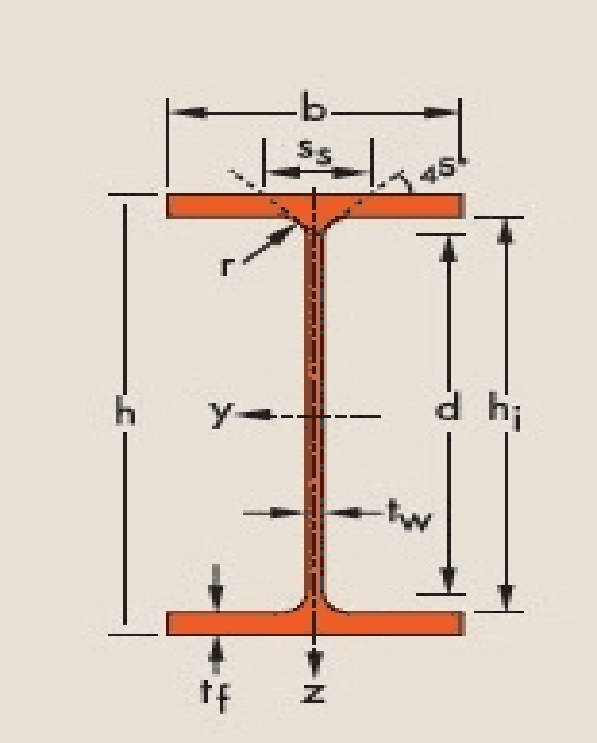
EN H-Shaped Steel
Grade: EN10034:1997 EN10163-3:2004
Specification:HEA HEB and HEM
Standard: EN
FEATURES
High strength: The cross-sectional shape of H-beams is designed to provide high bending strength and load-bearing capacity, making them suitable for large-span structures and heavy-load applications.
Excellent stability: The cross-sectional shape of H-beams ensures good stability under both compressive and tensile loads, contributing to the overall stability and safety of the structure.
Easy construction: The design of H-beams facilitates easy connection and installation during construction, improving project progress and efficiency.
High resource utilization: The design of H-beams allows for optimal use of steel properties, minimizing material waste and contributing to resource conservation and environmental protection.
Wide range of applications: H-beams are suitable for various building structures, bridges, and mechanical engineering applications, offering broad potential for use.
In summary, standard H-beams possess high strength, excellent stability, and ease of construction, making them an important structural steel material widely used in various engineering fields.
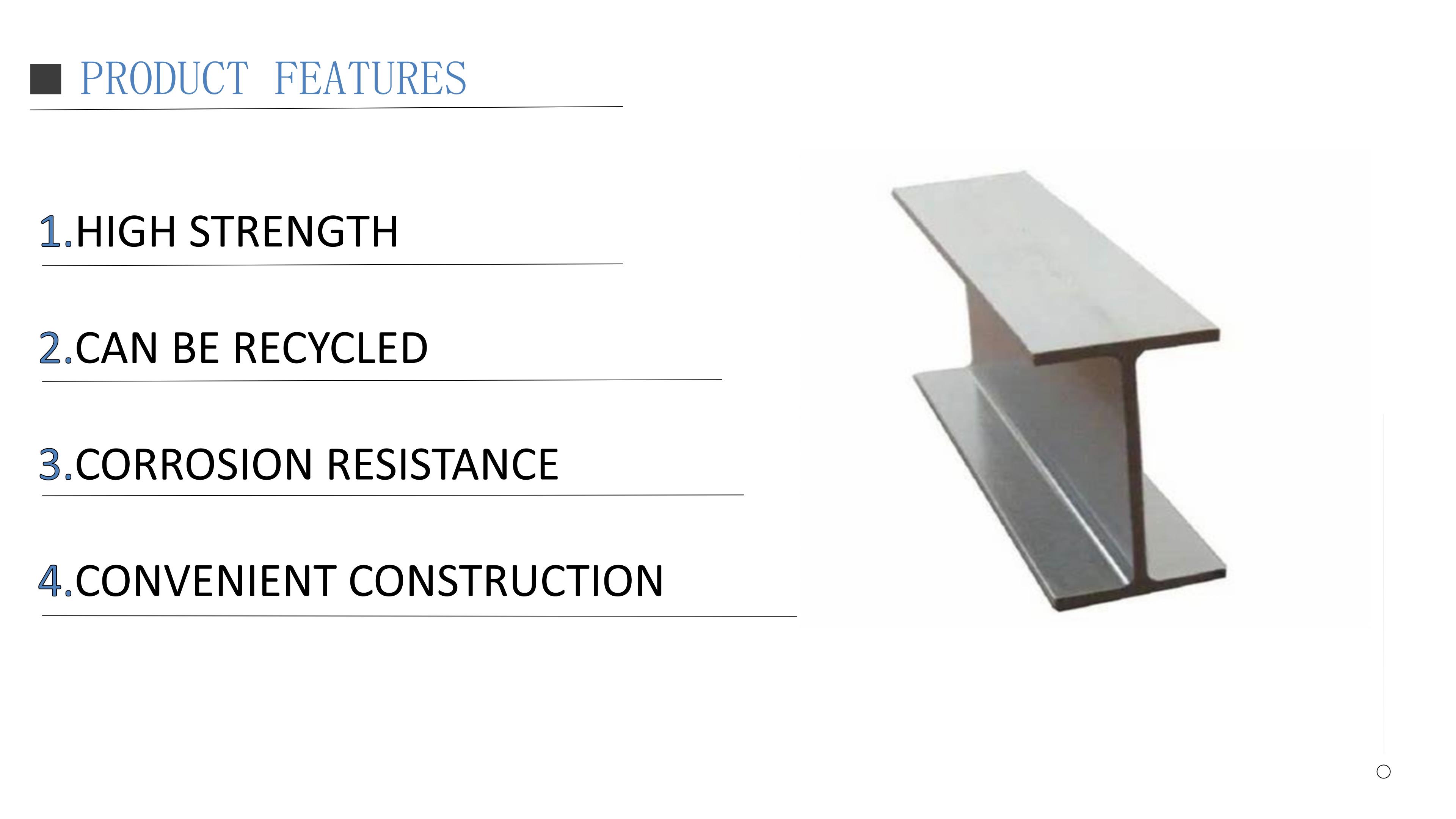
PRODUCT INSPECTION
The inspection requirements for H-beams primarily include the following aspects:
Appearance quality: The appearance of the H-beam should comply with relevant standards and customer specifications, with a smooth and even surface, free from obvious dents, scratches, rust, or other defects.
Geometric dimensions: The length, width, height, web thickness, and flange thickness of the H-beam should comply with relevant standards and customer specifications.
Straightness: The straightness of the H-beam should comply with relevant standards and customer specifications, which can be verified by measuring whether the two ends of the beam are parallel or by using a straightness gauge.
Torsion: The torsion of the H-beam should comply with relevant standards and customer specifications, which can be verified by measuring whether the sides of the beam are perpendicular or by using a torsion gauge.
Weight tolerance: The weight of the H-beam should comply with relevant standards and customer specifications, and the weight tolerance can be verified by weighing.
Chemical composition: If the H-beam is to be welded or undergo other processing, its chemical composition should comply with relevant standards and customer specifications.
Mechanical properties: The mechanical properties of the H-beam should comply with relevant standards and customer specifications, including tensile strength, yield strength, elongation, etc.
Nondestructive testing: If nondestructive testing is required for the H-beam, it should be performed according to relevant standards and customer specifications to ensure its internal quality.
Packaging and marking: The packaging and marking of the H-beam should comply with relevant standards and customer specifications for easy transportation and storage.
In summary, when inspecting H-beams, all of the above requirements should be fully considered to ensure that the quality meets relevant standards and customer specifications, thus providing users with the highest quality H-beam products.
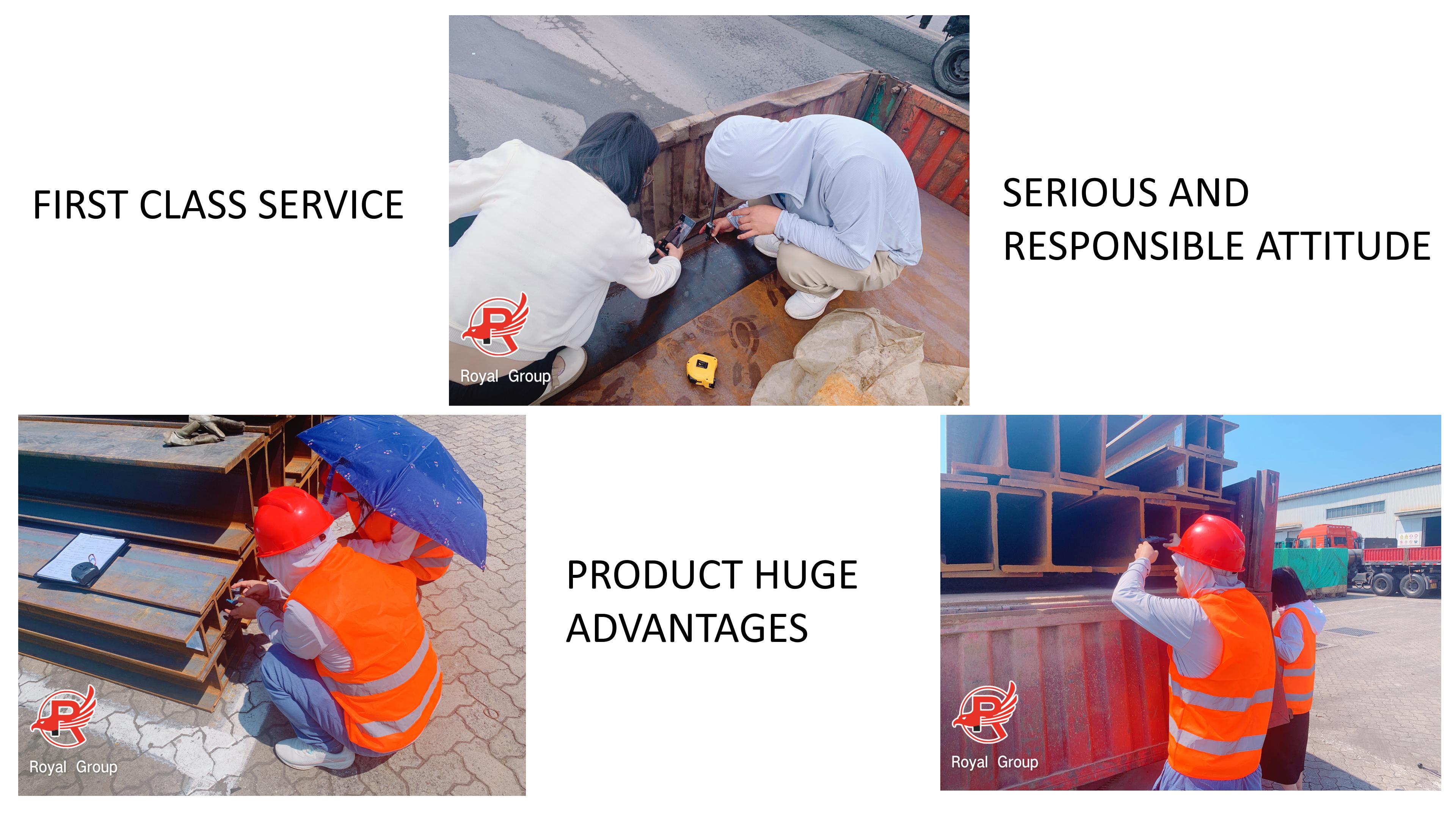
PRODUCT APPLICATION
External standard H-beams are widely used in the construction and engineering fields, including but not limited to the following aspects:
Structural engineering, bridge engineering, machinery manufacturing, shipbuilding, steel structure construction,
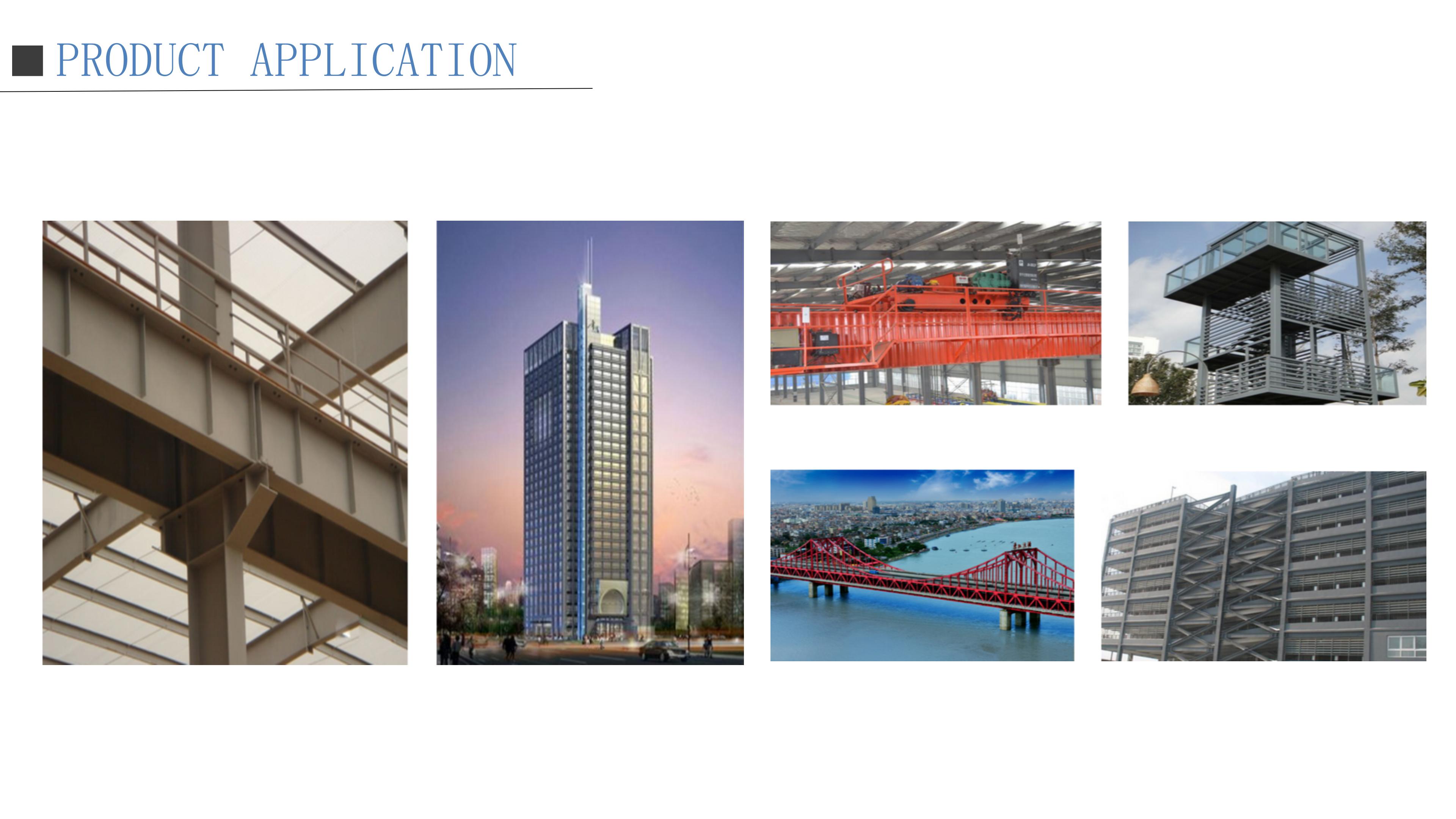
PACKAGING AND SHIPPING
Packaging and transportation of external standard H-beams usually require following the following steps:
Packaging: H-shaped steel is usually packaged according to customer requirements to protect its surface from damage. Common packaging methods include bare packaging, wooden pallet packaging, plastic packaging, etc. When packaging, it is necessary to ensure that the surface of the H-shaped steel is not scratched or corroded.
Labeling: Mark clear product information on the packaging, such as model, specification, quantity, etc., to facilitate identification and management.
Loading: When loading and transporting the packaged H-shaped steel, it is necessary to ensure that there will be no collision or extrusion during the loading process to avoid product damage.
Transportation: Choose appropriate transportation tools, such as trucks, railway transportation, etc., and choose the appropriate transportation method according to customer requirements and transportation distance.
Unloading: After arriving at the destination, unloading operation needs to be done carefully to avoid damage to the H-shaped steel.
Storage: Store H-shaped steel in a dry and ventilated warehouse to avoid moisture or other adverse effects.
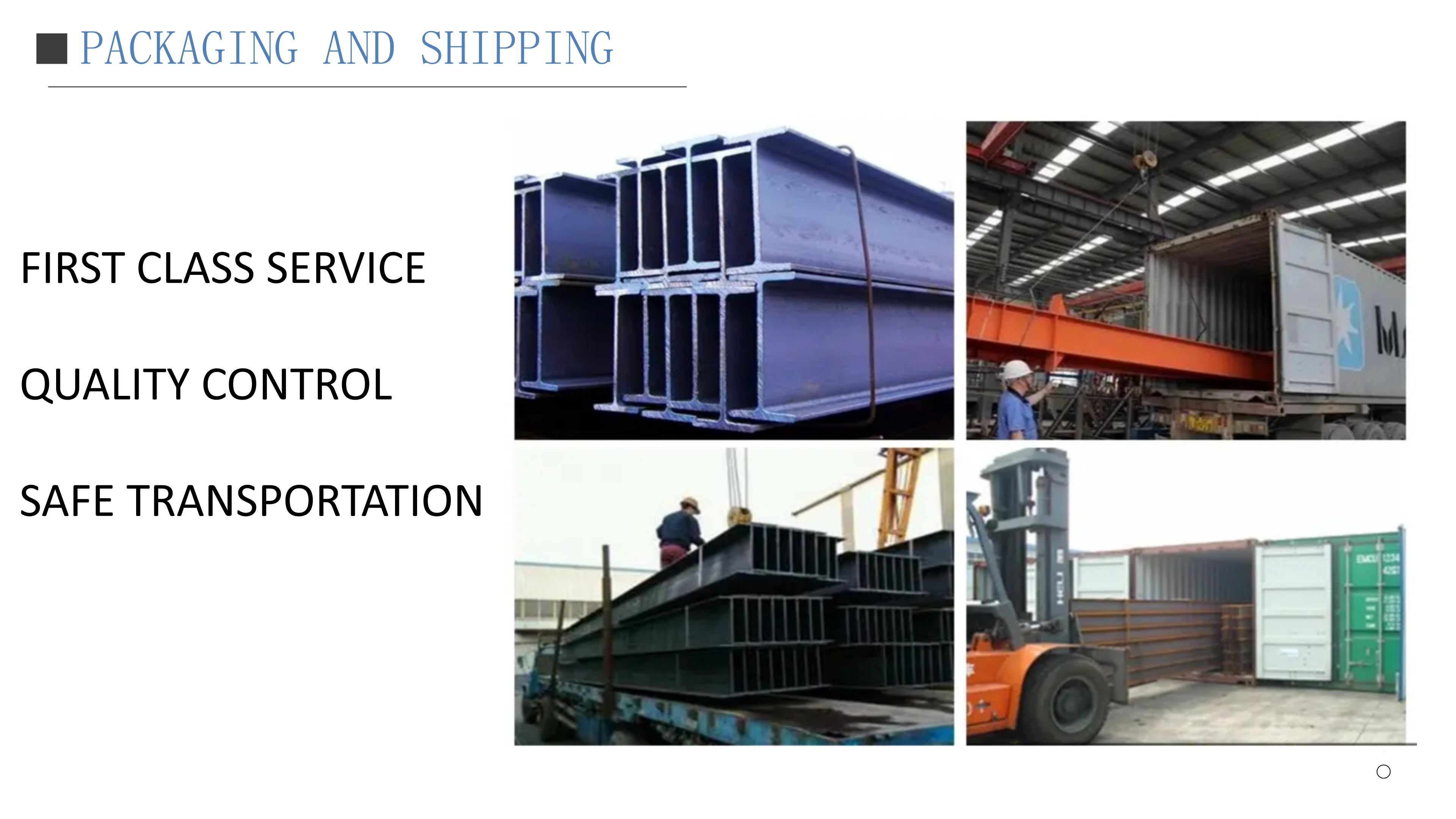

COMPANY STRENGTH
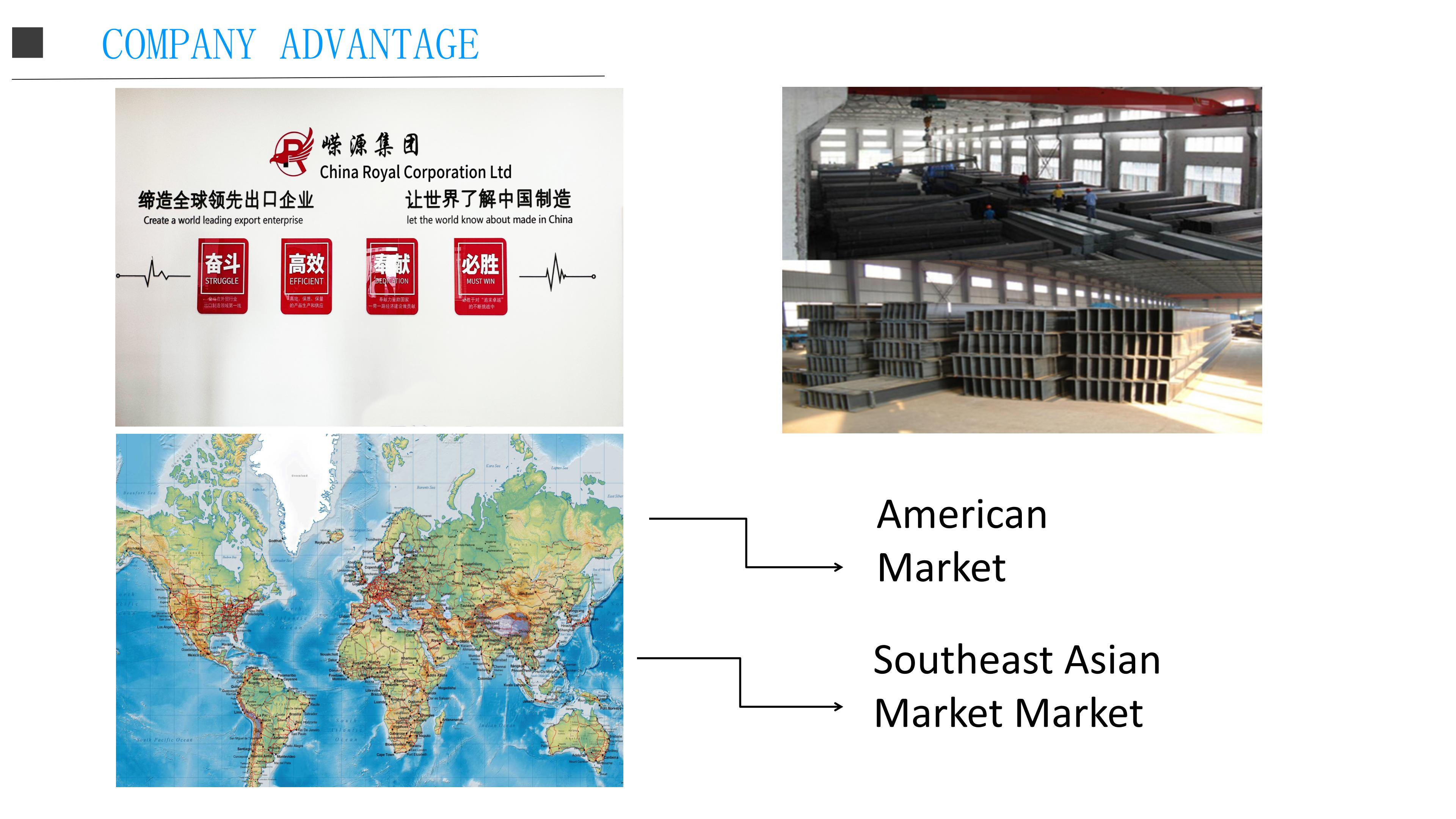
FAQ
1.How can I get a quotation from you ?
You can leave us message, and we will reply every message in time.
2.Will you delivery the goods on time?
Yes,we promise to provide best quality products and delivery on time. Honesty is our company's tenet.
3.Can I get samples before order ?
Yes, of course. Usually our samples are free,we can produce by your samples or technical drawings.
4.What is your payment terms?
Our usual payment term is 30% deposit, and rest against B/L. EXW, FOB,CFR, CIF.
5.Do you accept the third party inspection?
Yes absolutely we accept.
6.How do we trust your company?
We specialise in steel business for years as golden supplier, headquarter locates in Tianjin province, welcome to investigate in any ways, by all means.







